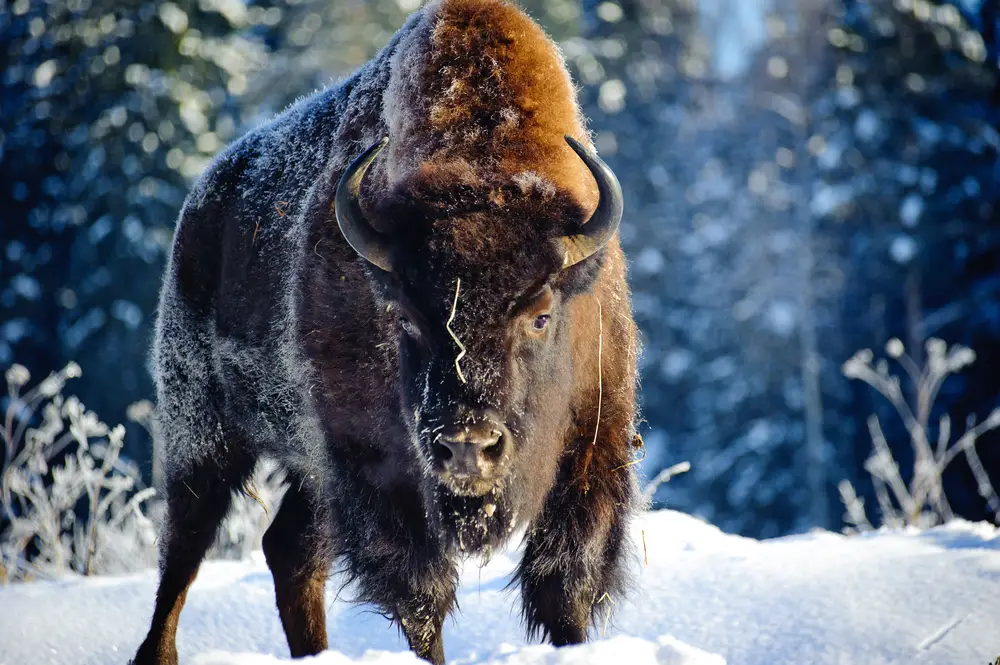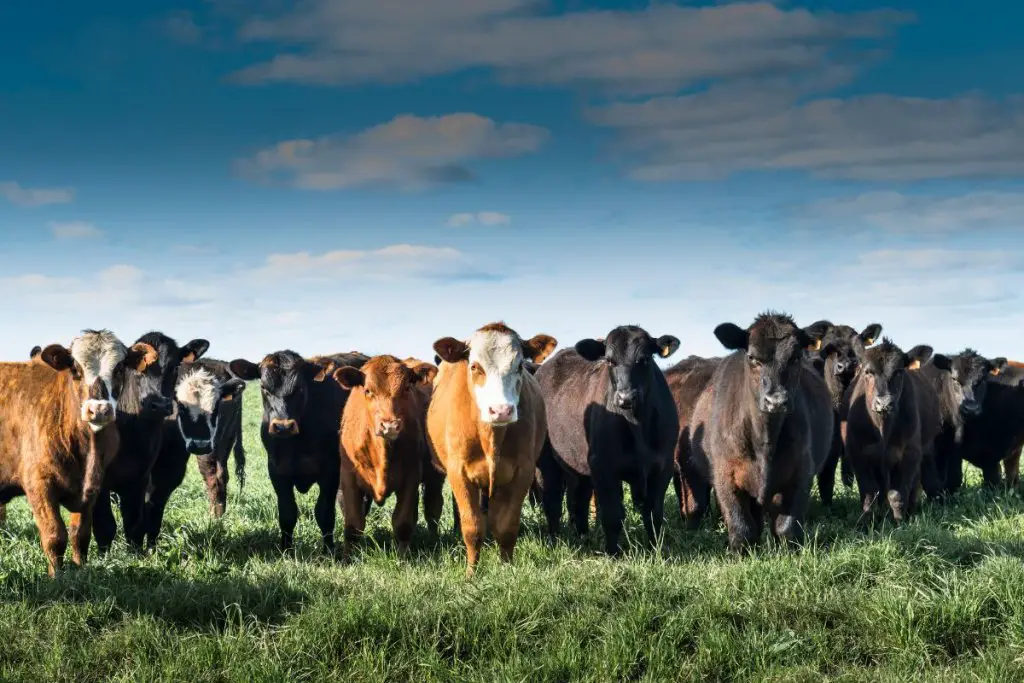Modern cattle come from wild aurochs around 10,000 years ago. Today, cattle are fascinating, given their beauty, intelligence, curiosity, diversity, and high production levels.
All these qualities endear cattle to humans (both farmers and consumers) in varying measures.
From ordinary cattle to miniature cattle, to over 1,000 recognized cattle breeds in the world, here’s an outline of the origin and gradual development of our bovine friends.
Table of Contents
Ancient Cattle
All cattle in the world trace their origin from ancient cattle, whose ancestors were the wild aurochs that lived in Eurasia (Europe and Asia) and northern Africa.
The aurochs were extra large wild bovines that people hunted largely for meat and later began domesticating in the early Neolithic age by selecting them for docility. Scientifically called Bos primigenius, the aurochs are a now extinct species. The last auroch was killed by a hunter around 1627 in Mazovia, Poland.

Because of their domestication and dwindling natural habitat as more land was cleared for agriculture, the aurochs decreased in size and conformation throughout generations to give rise to smaller animals that were easier to domesticate.
Two distanced and independent domestication events have been proved to be the founding point for modern cattle worldwide.
The first domestication happened in the Near East, notably in Western Iran, the Levant (the Middle East), Central Anatolia, and Turkey. This domestication happened about 10,500 years ago and led to the emergence and development of taurine cattle, also called European cattle (Bos taurus).
The second domestication happened about 8,000 years ago in the Indian subcontinent and East Asia, especially in modern-day Pakistan. This domestication led to the emergence and development of cattle of Indicine heritage (Bos indicus).
The third and most recently suggested domestication of aurochs happened in Africa in the Western Desert of Egypt, where archaeozoological evidence of aurochs has been found.
New World Cattle
Spanish and English explorers introduced the first batches of cattle into the New World, notably with the discovery of the Americas in the 1400s.

In 1493, Christopher Columbus brought the first cattle from Spain to the Americas, the miniature longhorn cattle that formed the founding stock for modern-day Texas Longhorn cattle.
The New World cattle breeds had both taurine and indicine lineages. The European cattle of taurine heritage had a heavy influence of African cattle that were of partial indicine heritage.
From the 1400s onwards, most cattle in the Americas became largely feral and semiferal and lived through 80-200 generations of natural selection rather than human-influenced artificial selection.
Life in the wild again meant that the cattle developed inherent instincts, hardiness, mothering abilities, and animal-to-animal socialization.
The re-domestication of cattle, such as what happened with Texas Longhorns after the Civil War, led to the widespread modern culture of breeding them mainly for meat and milk as single- or dual-purpose breeds rather than tri-purpose breeds for labor, milk, and beef.
Cattle Today
Modern cattle comprise both Bos indicus and Bos taurus as the recognized species of cattle.

All cattle belong to the Bovidae family (which comprises hollow-horned ruminants) and the Bos genus, which includes other members like the yaks that successfully breed with cattle to produce hybrids.
Some scientists classify taurine and indicine cattle as separate subspecies of cattle, naming them Bos taurus taurus and Bos taurus indicus, respectively.
Taurine cattle are humpless cattle, also called European Highland cattle. Their origin traces back to Europe, Australia, Asia, South America, Africa, and North America.
Taurine lineage cattle include continental or exotic breeds of European origin, such as Simmental, Charolais, Saler, and Limousin.
The taurine heritage also includes British breeds of cattle, also called English breeds. These are smaller than continental breeds and comprise breeds such as Black Angus, Hereford, Shorthorn, and Red Angus.
Taurine cattle are now actively selected artificially for docility, ease of handling, calving ease, polled genes, and higher production of meat or milk.
Bos indicus are humped cattle of South Central Asia origin and include Zebu cattle (including all strains of Zebu) and American Brahman cattle (the name given to Zebus in America). This group also includes crosses of Brahmans such as Beefmaster, Brangus, Simbrah, and Santa Gertrudis.
Because of extensive human intervention through crossbreeding, backcrossing, and controlled inbreeding, modern-day cattle have improved genetics tailored for hardiness, adaptability to climates, production, obedience, and handling ease.
Interbreeding Bos taurus and Bos indicus as cross-fertile species has produced hybrid breeds of cattle with superior characteristics than their individual parents.
Cattle Today By The Numbers
In 2021, the Foreign Agricultural Service of the USDA estimated a population of over 1 billion head of cattle worldwide. Most of these cattle populations are reared domestically in India (305.5 million), Brazil (252.7 million), and China (95.62 million). The US scored fourth place with 93.595 million head.
Most modern cattle herds are fully domesticated and raised in cattle ranches in feedlots or rangeland as beef cattle or intensive minimal and zero grazing units as dairy cattle. Almost no cattle are feral or semi-feral today.
Most African cattle now have heavy influence from taurine and indicine cattle due to extensive Bos taurus x Bos indicus species to species breeding. Only a few African taurine (Bos taurus africanus) remain now, including the Kuri, N’Dama, and some strains of West African Shorthorn.
Uses of Modern Cattle
From wild cattle to domesticated cattle, the world has witnessed minimal changes in the uses of cattle. Ancient cattle were used for milk, labor, and meat, depending on the breed’s nature. They were also used for sporting and spiritual purposes, not to mention by-products like hides, hooves, horns, and hair.
Cattle domestication has done little to change these uses, even as the cattle industry thrives worldwide at different developmental milestones.
Today, cattle are still used for meat, labor, and milk.
The main utility change has been a shift from dual-purpose and tri-purpose productivity for some breeds and crossbreeds to selection majorly for single productivity. This has led to the prefixes beef and milking to show that a specific breed is kept for meat, such as Beef Shorthorn, or milk, such as Milking Devon.
For example, breeds like Piedmontese, Angus, Texas Longhorn, and Brahman are used mainly for meat production. In contrast, breeds like Jersey, Guernsey, Holstein-Friesian, and Milking Shorthorns are primarily used for milk production.
